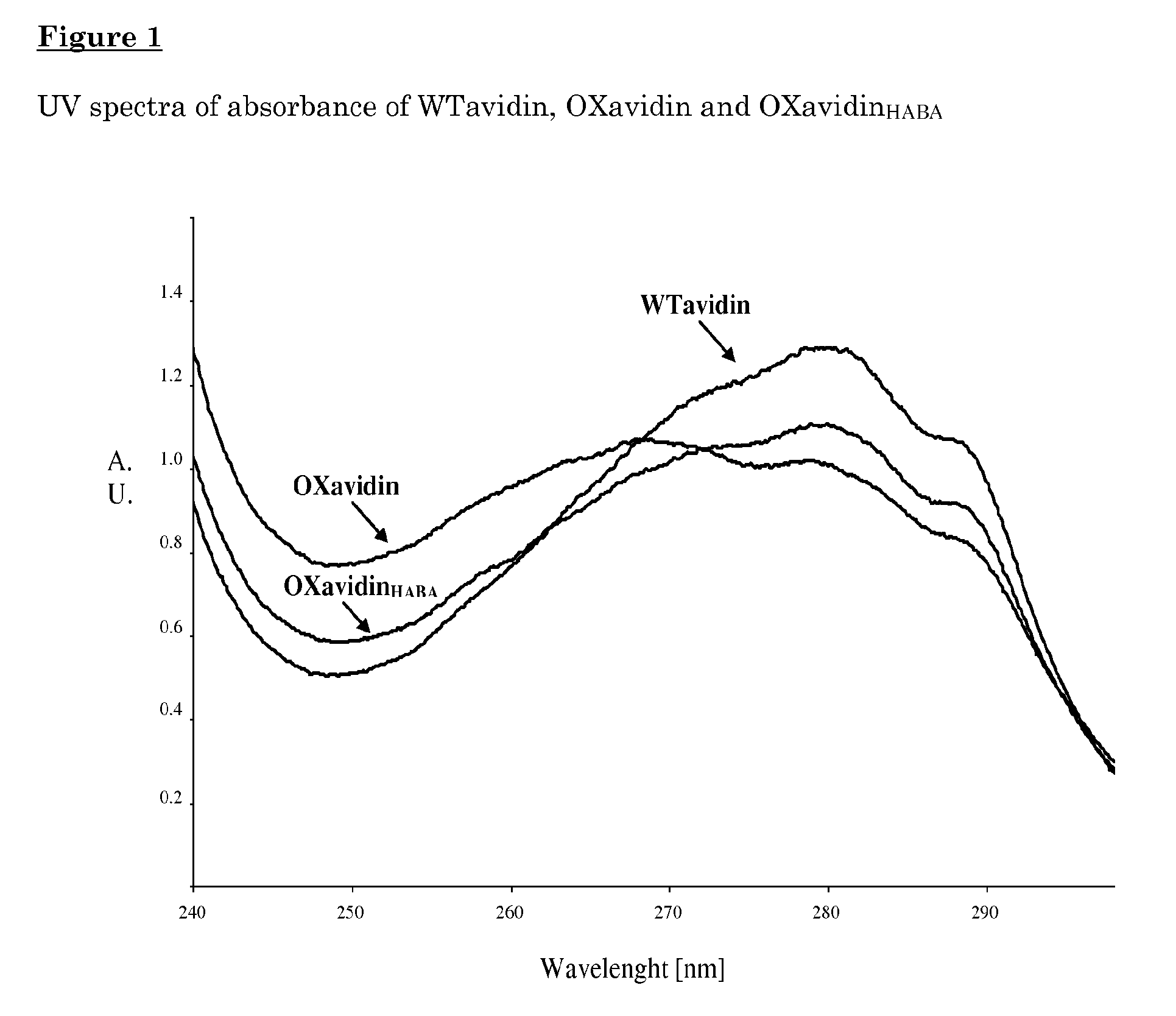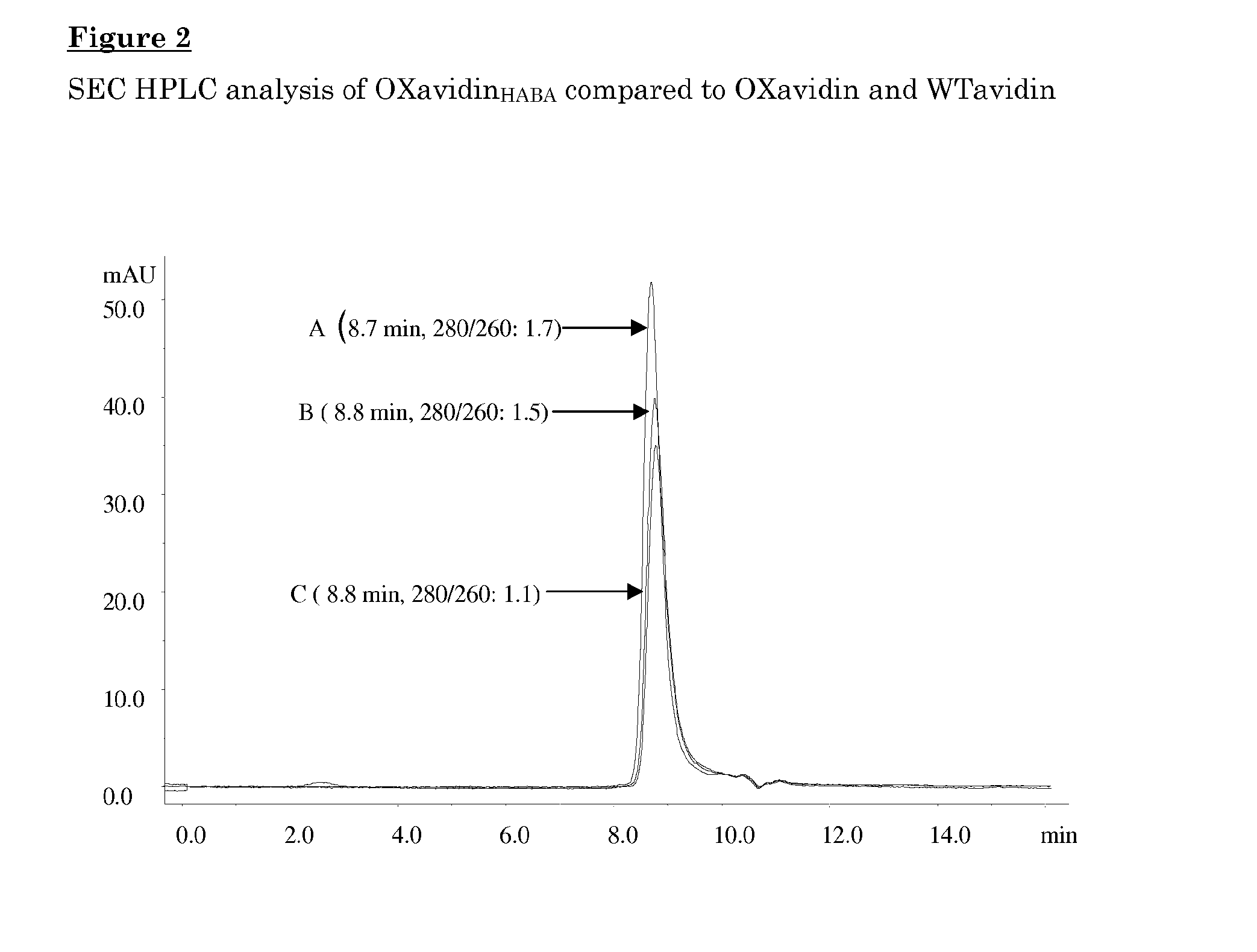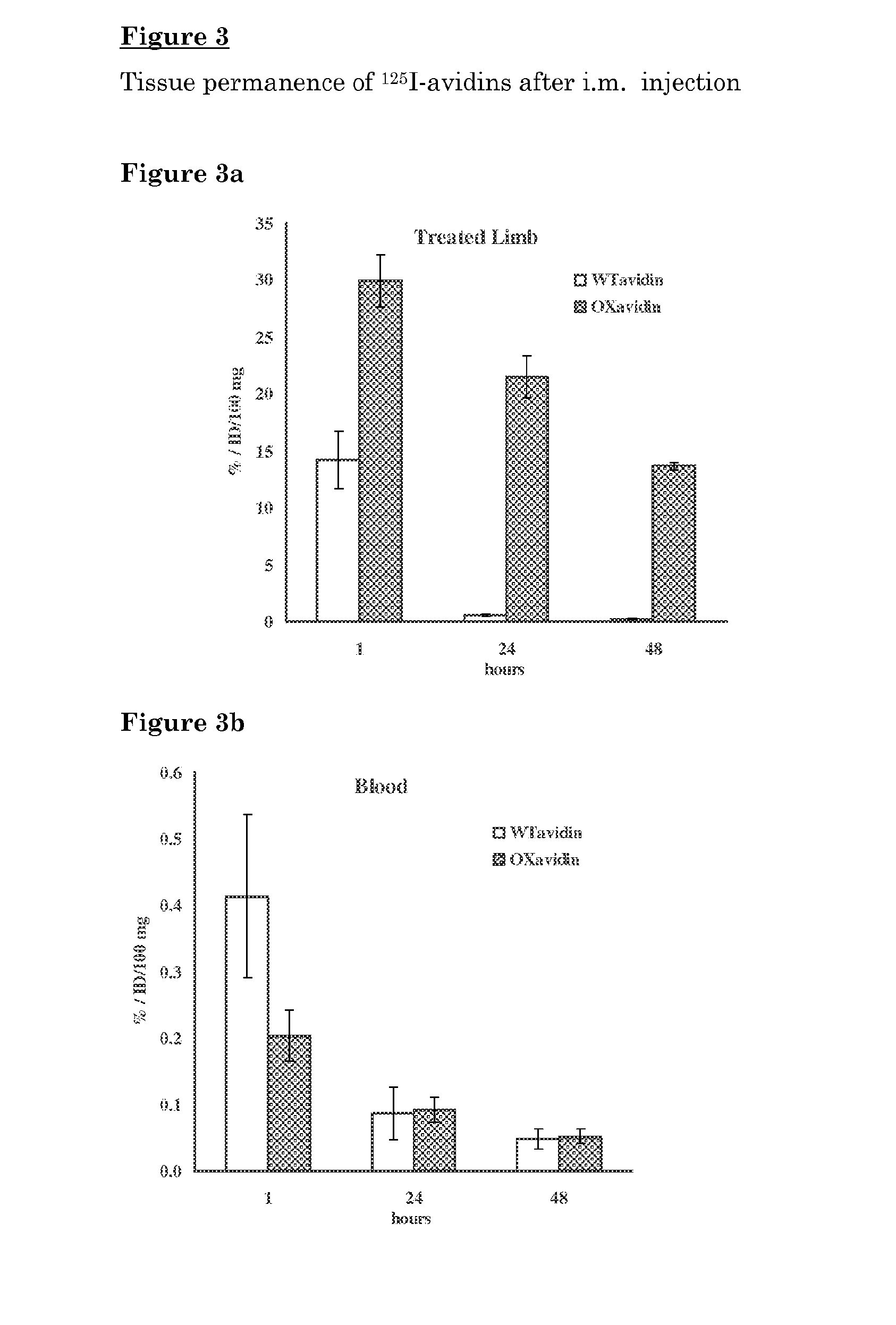Oxidized avidin with high residency time in the treated tissues
a technology of avidin and treatment tissues, applied in the field of modified avidins, can solve the problems of rapid clearance from the body, renal toxicity, and no suggestion of direct avidination through covalent binding of avidin to the considered tissu
- Summary
- Abstract
- Description
- Claims
- Application Information
AI Technical Summary
Benefits of technology
Problems solved by technology
Method used
Image
Examples
example 1
Synthesis and Biochemical Characterization of Oxidized Avidins
[0107]The oxidation procedure method comprises the following successive steps:[0108]a) incubating wild type avidin pre-mixed with a molar excess of HABA, with an oxidizing agent such as 10-20 mM sodium periodate in 50-100 mM acetate buffer at pH below 6.0 for 1-5 hours at 4° C. or at room temperature;[0109]b) blocking of the reaction and purification by removal of the oxidizing agent and HABA by chromatography, ultrafiltration, dialysis or other purification methods known to the expert in the field; and[0110]c) lyophilizing or formulating at an acidic pH.
[0111]The oxidized avidin was further analyzed for the molecular size by size exclusion chromatography on a biosep-SEC-S3000 column (Phenomenex® chromatography 300×7.8 mm, volume: 14.3 ml) using an isocratic condition with a 100 mM sodium acetate buffer pH 5.5 and 0.15 M NaCl at a flow rate of 1 ml / min at room temperature.
[0112]As shown in FIG. 2 the elution of an oxidize...
example 2
Biodistribution of Oxidized Avidin in Treated Mice
[0113]Oxidized avidin (OXavidin) was evaluated for the permanence in the treated tissue for its biodistribution in not treated organs, as well as for its capacity to capture 111In-ST2210 in a mouse model simulating intraoperative avidination for radionuclide treatment IART® in comparison to wild type avidin (WTavidin).
[0114]The animal model of intraoperative avidination for radionuclide treatment IART® was set up by performing a surgical cut in one hind limb of a mouse, infiltrating radiolabelled avidin in the surgical margins and surrounding tissues and measuring radioactivity in the treated limb at different time points after administration. In a parallel group of mice, the radioactive avidin was infiltrated to the limb without surgery.
[0115]The amount of radioactivity, after 1 and 24 hours from administration was similar in the surgically treated and not surgically treated animals. Therefore, further studies were performed by infi...
example 3
Long Term Tissue Permanence of Wild Type and Oxidized Avidins
[0121]Balb / c nu / nu mice (Charles River, Lecco Italy) were injected in one hind limb with 45 μg in 15 μl of either 125I-labelled WTavidin or 125I-labelled OXavidin formulated in 100 mM acetate buffer pH 5.5 and at the indicated time points the animals were sacrificed and radioactivity in the treated limb as well as in other non target organs measured by gamma counter (Camberra Packard, Schwadorf Austria).
[0122]The tissue permanence of WTavidin and OXavidinHABA was monitored up to 14 weeks. The tissue half-life of OXavidin, when referred to the 1 hour level, was found to be about 2 weeks as opposed to 2 hours for WTavidin (FIG. 4).
PUM
| Property | Measurement | Unit |
|---|---|---|
| temperature | aaaaa | aaaaa |
| Tm | aaaaa | aaaaa |
| concentration | aaaaa | aaaaa |
Abstract
Description
Claims
Application Information
 Login to View More
Login to View More - R&D
- Intellectual Property
- Life Sciences
- Materials
- Tech Scout
- Unparalleled Data Quality
- Higher Quality Content
- 60% Fewer Hallucinations
Browse by: Latest US Patents, China's latest patents, Technical Efficacy Thesaurus, Application Domain, Technology Topic, Popular Technical Reports.
© 2025 PatSnap. All rights reserved.Legal|Privacy policy|Modern Slavery Act Transparency Statement|Sitemap|About US| Contact US: help@patsnap.com



